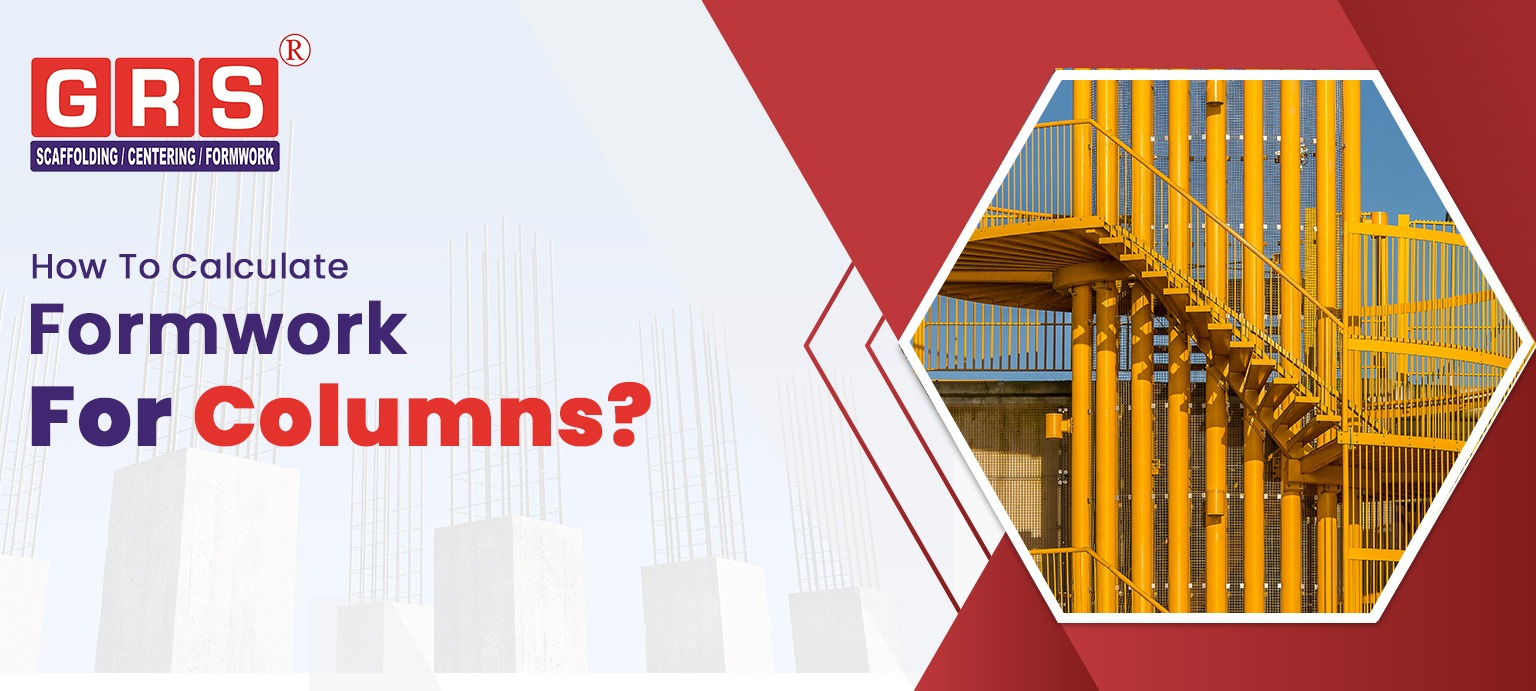In the realm of construction, precision and accuracy are paramount. One crucial aspect of ensuring structural stability is the proper calculation of formwork for columns. This comprehensive guide will walk you through the process step by step, helping you understand the intricacies involved in this critical construction task.
Formwork refers to the temporary structure or mold used to shape and support concrete until it cures.Accurate formwork is vital for ensuring the integrity and strength of structural elements. As a one of the renowned Scaffolding Manufacture In Kolkata, you can find all type of Scaffolding products. Just contact us to share your Scaffolding Products requirement.
This guide will delve into the intricacies of calculating formwork for columns, ensuring you have the knowledge and skills necessary for successful construction projects.
Understanding Column Formwork Basics
Column formwork is a fundamental component in construction, providing the framework that shapes concrete columns until they achieve the desired strength. Understanding the basics of column formwork is essential for ensuring the structural integrity of buildings. Let’s delve into the key aspects of column formwork, demystifying its components and techniques.
Formwork Materials
Types of Materials:
- Wood:Traditional and cost-effective choice, often used for small to medium-sized projects.
- Steel:Durable and suitable for reusable formwork systems, ideal for large-scale constructions.
- Plastic:Lightweight and easy to handle, popular for small projects and intricate column designs.
Components Of Column Formwork:
Panels:- Panels serve as the main surface onto which concrete is poured.Available in various materials and sizes to accommodate different column dimensions.
Ties:Ties secure the formwork panels together, maintaining the desired shape of the column.They come in different types, such as snap ties and wedge ties, ensuring stability during the pouring process.
Wedges:Wedges are used with ties to tighten and strengthen the formwork structure.
They play a crucial role in preventing the formwork from shifting or deforming while the concrete sets.
Formwork Reinforcement: Reinforcements like steel bars are added within the formwork to enhance the column’s strength.Proper placement and spacing of reinforcement bars are crucial for the column’s load-bearing capacity.
Safety Precautions & Best Practices:
1. Structural Integrity:
Ensure that the formwork is structurally sound and capable of withstanding the pressure exerted by wet concrete.
2. Regular Inspections:
Conduct thorough inspections before and during concrete pouring to identify any signs of weakness or misalignment.
3.Proper Installation:
Follow the manufacturer’s guidelines and recommendations for installing formwork components to guarantee stability.
4.Fall Protection:
Implement adequate fall protection measures for workers involved in the formwork installation process.
5.Professional Expertise:
If unsure, consult with experienced formwork engineers to design and install the formwork correctly.
Understanding the basics of column formwork is crucial for every construction professional. By choosing the right materials, understanding the components, and adhering to safety protocols, construction teams can ensure the successful and safe formation of columns, contributing to the overall strength and stability of the building structure.
Calculating Surface Area Of The Column:
In the intricate world of construction, precision is paramount. Understanding how to calculate the surface area of a column is fundamental for creating accurate formwork and ensuring the structural integrity of buildings. This comprehensive guide will walk you through the essential steps involved in calculating the surface area of a column, providing you with the knowledge and skills necessary for successful construction projects.
Importance of Calculating Surface Area
Structural Stability: Accurate surface area calculations are vital for determining the amount of formwork needed, ensuring the column’s stability during and after the pouring of concrete.
Material Optimization:
Proper calculations prevent wastage of materials, optimizing resources and reducing construction costs.
Safety Assurance:Precise measurements guarantee that the formwork adequately supports the concrete, enhancing overall construction safety.
Types Of Columns and Their Surface Area Calculation
Square Columns: Learn the formula for calculating the surface area of square columns: A=4×a, where a is the length of one side.
Rectangular Columns: Understand the surface area formula for rectangular columns: A=2×(l×b+l×h+b×h), where l is the length, b is the breadth, and h is the height.
Circular Columns: Explore the calculation for circular columns: A= π×d×h, where d is the diameter and h is the height.
Determining Formwork Material and Quantity
Material Selection: Consider factors influencing your choice of formwork material, such as concrete pressure, budget constraints, and reusability.
Quantity Calculation: Calculate the required amount of formwork material based on the surface area and the chosen type of formwork.
Optimization: Discover tips for optimizing material usage, reducing construction costs, and enhancing efficiency.
Conclusion:
In the realm of construction, precision is the cornerstone of every successful project. Understanding the intricacies of calculating the surface area of a column is not just a skill; it’s an essential asset.
By mastering these calculations, builders ensure the stability, optimize resources, and enhance the safety of structures.
As you embark on your construction endeavors armed with this knowledge, remember: accurate measurements are the foundation upon which sturdy and secure buildings stand. Happy constructing!

